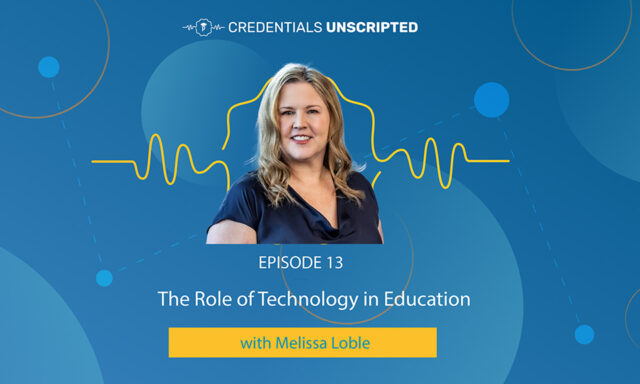
Higher Ed
The Role of Technology in Education
Each year at Parchment we bring together educators and employers to discuss the future of academic credentials, hiring, lifelong learning and the careers of tomorrow. The second annual Parchment Summit on Innovating Academic Credentials was held in Washington D.C. March 1.
“Instead of the look of a traditional academic conference in which registrars are with other registrars or career services staff are with other career services staff, we like to bring together all the different parts of a university involved with credential innovation so they can see some of the broader themes and learn from each other,” says Matthew Pittinsky, PhD., CEO of Parchment.
Connecting the links in the credential value chain
The 2017 program included keynote speeches from bestselling education author and Washington Post contributor Jeff Selingo and Wesleyan University president Michael Roth, six breakout discussions, and two “fireside chats” in which panels of experts debated the future of university credentials and what it means now that employers are starting to use Big Data to mine “people analytics” for making hiring decisions. Three trends emerged from these discussions.
“Five years ago, university students would go through four years of school and then create a resume their senior year,” says Kevin Krueger, President of the National Association of Student Personnel Administrators (NASPA). “What we know now is that’s not good enough; the career planning process should start at admissions.”
Rising levels of student debt and a global workforce have increased pressure on universities to connect the dots between the entirety of the college experience and earned skills that can translate in the workplace. Forward-thinking schools such as Princeton are responding by creating programs for helping students envision and create a pathway from the classroom to a career.
“We’re shifting toward helping students develop a personalized exploration of meaning and purpose in their engagement with the world,” says Pulin Sanghvi, Executive Director of Career Services at Princeton. To bring this approach to life, he’s created and teaches a course called Career and Life Vision, which he describes as a “hypothesis-driven model of self-exploration” to help students collect the skills needed to achieve what they want from life.
Selingo, whose new book is titled There Is Life After College: What Parents and Students Should Know About Navigating School to Prepare for the Jobs of Tomorrow, says the biggest opportunity in credential innovation is in figuring out ways to properly assess and credential for employers all the learning students do when they aren’t at a desk — because a majority of the work they’ll do on the job will occur on the move, in meetings, or at events. Anywhere but at a desk.
“The world of work now is a mashup of activities, there isn’t a scheduled day,” Selingo says. “it’s a lot of negotiation, it’s a lot of teamwork, it’s a lot of moving from one activity to another activity. And that’s why I think, in many ways, there’s a lot more similarity between preschool and the world of work than the traditional notion of college and the world of work.”
To bridge the gap, NASPA is teaming up with the American Association of Collegiate Registrars and Admissions Officers (AACRAO) to create what’s known as a Comprehensive Student Record for capturing and assessing learning outcomes, observed competencies, and experiences outside the classroom. What’s the difference between that and a resume? Krueger says it comes down to authentication. Students can’t merely claim competencies; they have to be earned and authenticated by a university.
“That way, skills and competencies are provable,” Krueger says. “Organize [the data] in such a way that would allow an employer to sort or search on a set of criteria or competencies, in the same way you can on LinkedIn, and you’ve a companion document that demonstrates the learning behind the degree.”
Employers have long struggled to quantify classroom work when hiring. In recent years, some have turned to multi-stage interviews conducted over the course of weeks or months to better get to know recent graduates before making an offer. Sanghvi says that’s problematic.
“Hiring managers don’t have the ability to invest in 100 coffees with every candidate that comes their way,” he says. Their answer? Put more pressure on universities to better connect the dots between curriculum and on-campus experience with marketable on-the-job skills. Accelerated adoption of the Comprehensive Student Record or something like it could help to solve the problem.
“I think a lot of this is going to be driven by employers when they say to universities: we’re not going to hire your students anymore because they don’t come to us with the underlying skills we need,” Selingo says.
Stay involved in the discussion
As with all discussions on the future of education, the discussion about how to innovate academic credentials will continue online before the next Parchment Summit in 2018. Follow along on Twitter and Facebook and bookmark our resource page to stay connected and engage in Summit conversations on Twitter using #ParchmentSummit.
“What drives innovation is that we expect credentials to do more in today’s knowledge economy than we did even 50 years ago,” Pittinsky says. “We expect them to function for the student in the labor market. We expect them to be portable, collectible, shareable, stackable and that’s just today. We’re always going to expect more of credentials.”
